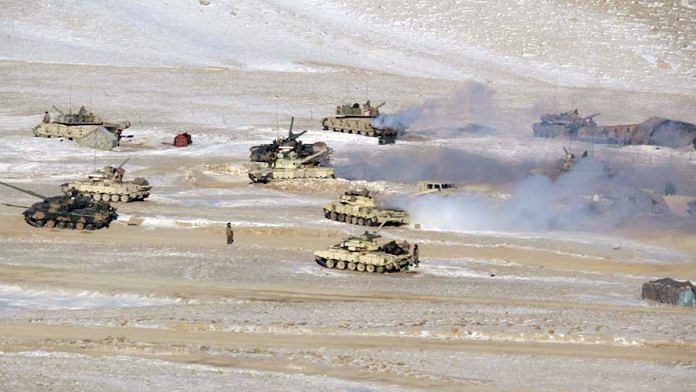
Thank you dear subscribers, we are overwhelmed with your response.
Your Turn is a unique section from ThePrint featuring points of view from its subscribers. If you are a subscriber, have a point of view, please send it to us. If not, do subscribe here: https://theprint.in/
The LAC issue will never be solved because the Chinese see gains in strategic confrontation with India. Since China occupied Tibet, they continuously tried to occupy more Indian territory. It has never been PLA’s local action but a decision made by the top leadership and directed to the PLA. Currently, China wants to have war with India. The preparation inside Tibet is the proof (including air power enhancement). Even if disengagement followed by de-escalation in the remaining friction points takes place, India should not move forward as the Chinese would like to see normalcy in the bilateral relationship, simply because the Chinese cannot be trusted at all. Also, India must make a domestic economic strategy for the coming two decades in order to eliminate all imports from China, which will allow the trade imbalance to reduce sizably in favor of Indian economic security.
India requires sustained economic growth. This growth should eventually be used in funding India’s conventional military deterrent including for Navy, as there is a requirement to attain that economic muscle for reaching the target of 200 ships being inducted in service. Also on the submarines, India has been lagging a lot and has to catch up. India must improve its nuclear deterrence by conducting nuclear tests of the thermonuclear device, so as to equal China. Currently, China is working on enhancing its Air Force strength in Tibet, for neutralizing the advantage the Indian Air Force has from the plains. Air Power is solely the critical dominating force to win a war.
The diplomatic line in text and practice of the QUAD countries has been ‘free and open Indo-Pacific’ which in fact has helped China become a superpower, given the fact that China has access to the sea lanes while being the biggest user of the Indo-Pacific region. India must be part of a NATO among the QUAD members to deter the Chinese Navy in the Indian Ocean (wealth related to the global trade). If comprehensive national power (CNP) is attained by India at the desired level then the China-Pakistan nexus will be one day forced to leave their idea of strategic confrontation with India because eventually they will realize that strategic cooperation will give them more gains.
India should not worry about Pakistan because over a period of time capabilities have been developed that are enough to deal with any contingency. The threat coming from Pakistan towards India is a lot less than that coming from China in the cyber, economic, CNP and military arena. That is why it’s best to discard SAARC by neglecting Pakistan.
Indian primacy was vanishing since 15 August 1947. This would not have vanished if India had not chosen to be a self-reliant power that is undivided India was a globalizing entity, because it was connected to global trade in form of export of labor, capital. But once India chose to be self-reliant, not interested in exports, substituting imports, not interested in uniting the market; inward orientation meant India’s natural linkages began to dissipate.
Only after 1991 (liberalisation) did India start thinking about regional economic integration. For example, Nepal had to import everything from India; India did not help Nepal overcome it, by suggesting that both countries grow together. This was adopted by India only in 2000s, till then the question of customs differentials, the whole set of problem; Nepal resented dependence on India. India’s decision to spearhead the Non-Aligned Movement and its fight against the inequalities in Global Order came at the cost of neglecting South Asia.
After independence India was inward looking but in the past two decades regional economic integration has been attempted. By the time India started integration, China had arrived in South Asia. So other countries have more options today while twenty years ago they did not have too many options and India for example prevented the World Bank from integrating South Asia. This is because it was seen as an imperialist tool though India took money from World Bank. When the Asian Development Bank (ADB) during 1980s offered help to India on regional connectivity, the proposal was declined saying with Nepal we deal directly.
It is only in 2001 when India joined the ADB’s South Asia Sub Regional Economic Program. But China used the international financial institutions to actually connect with its neighbors. India’s mission of regional economic integration has led to improvements but still a long way to go. Therefore for India’s integration, it needs to decrease non-tariff barriers, improve infrastructure and connectivity. India does not need SAARC for economic integration, provided it is willing to open markets. If majority of South Asia neighbors become more aligned with India, then it will be a big advantage to India strategically vis-à-vis the Chinese.
Also read: China’s warm welcome for Taliban sparks sharp criticism at home
These pieces are being published as they have been received – they have not been edited/fact-checked by ThePrint.

COMMENTS